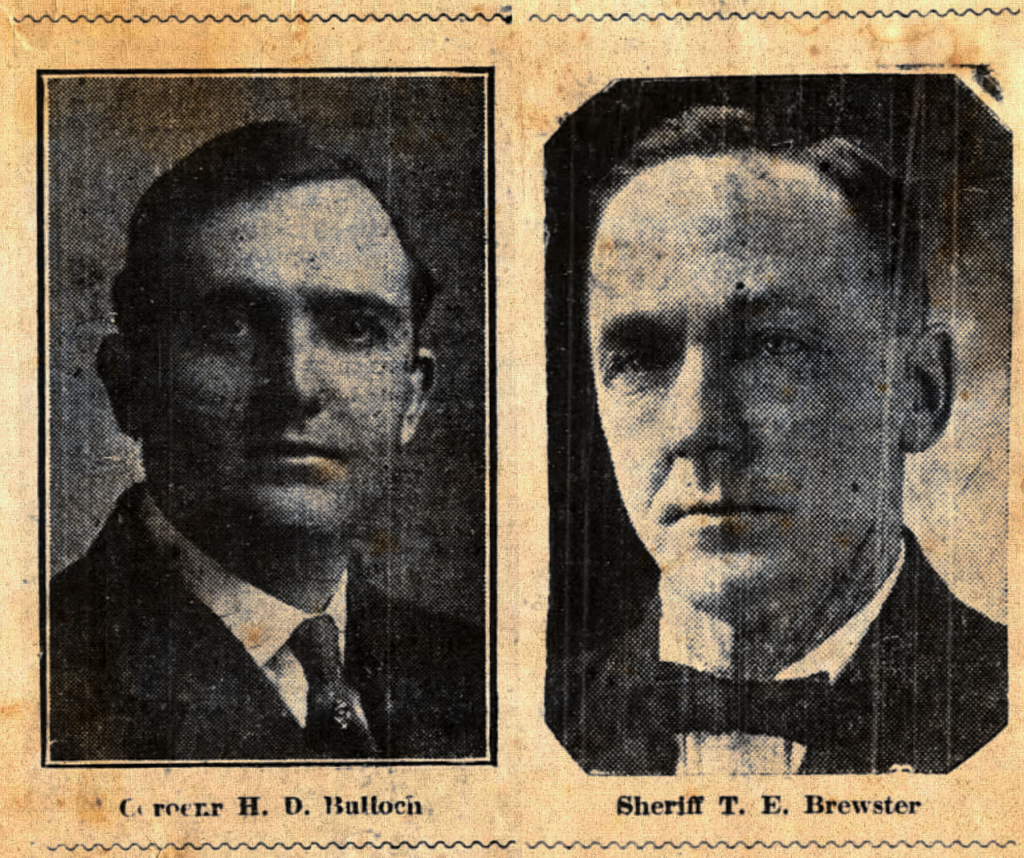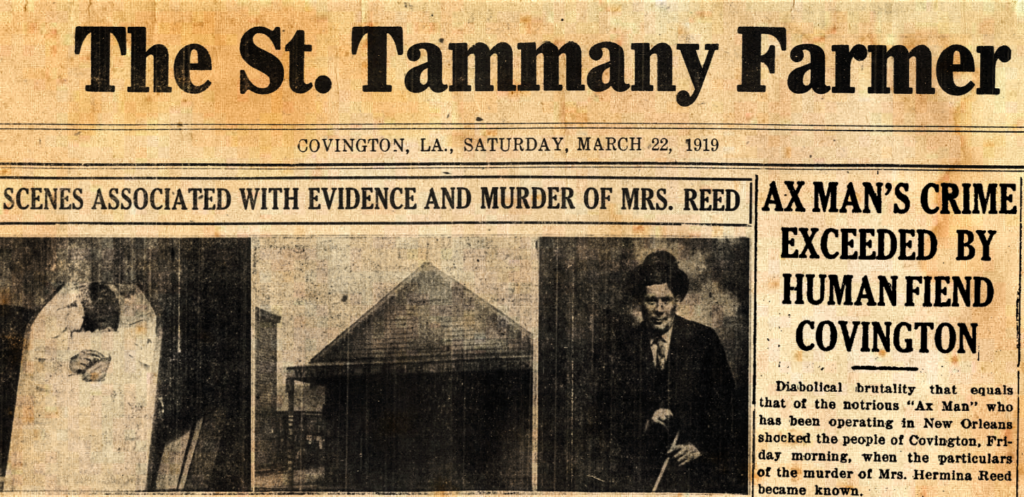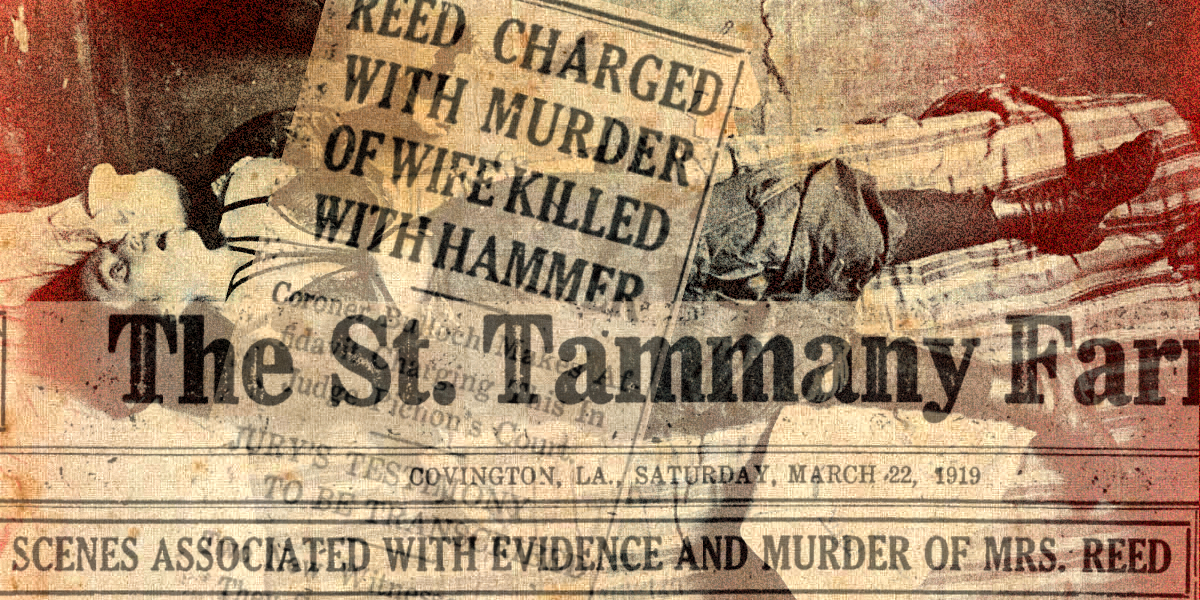Reed indicted for wife’s murder 100 years ago
Nearly a century before Reginald Reed murdered his 26-year-old wife, Selonia Reed, in 1987, an eerily similar case dominated local headlines.
Newspapers described 26-year-old Hermina Reed as a “perfectly-shaped pretty young woman,” and her murder as “the mostly ghoulish South Louisiana has ever witnessed.”
Sound familiar?
Instead of a screwdriver, Hermina Reed’s assailant used a hammer.
Police charged her husband, Leroy Reed—a 40-year-old carpenter and part-time taxi driver from Amite—with “disfiguring his wife’s face beyond recognition” using a “ship’s hammer” found at the scene.
Reed told police he did not kill his wife. He only discovered the body. He insisted his wife’s former boyfriend, in town from El Paso, Texas, was the likely culprit, but police found no such visitor.
Shortly before midnight, Friday, March 14, 1919, a drunken Leroy Reed stumbled into The Warren Saloon. There he told barroom customers he had just found his wife murdered. Patrons in the crowded bar who heard him laughed. Surely, Reed was joking. Until that night, such things never happened in St. Tammany Parish. However, the bartender took Reed’s story seriously, and before closing the saloon three hours later, he telephoned law enforcement.
Deputy Sheriff Guy A. Smith apprehended Reed, sleeping in the bar’s parking lot, at seven that morning. By noon, The St. Tammany Farmer’s frontpage headline read, “New Orleans Ax man’s crimes exceeded by Covington Fiend.”
In tears, Reed told police how he found the body and led them to his home to see for themselves. They found all three doors locked at the house. Someone had secured the front and side doors with padlocks on the outside after latching the rear door from the inside. Reed told Deputy Smith he had lost his keys to the padlocks weeks before and usually used a knife to open the backdoor.
When investigators and the press opened the backdoor that morning, a reporter from the New Orleans States-Item saw it this way:
“Lying on her bed in one of the four rooms of a wooden house, situated in what is usually called the District, in the block opposite Addison Grocery, the finely shaped body of Mrs. Reed presented the appearance of one sleeping. Her small feet protruded from the covers and hung inches from the floor, but when police uncovered her face, the ghastly sight caused all in the home to shudder at the horror.”
“Her open black and white checked dress revealed her breast and silk embroidered underwear. Mrs. Reed had diamond rings on her fingers and diamond earrings in her ears. The general fittings of the bed appeared more expensive than the other furnishings in the room. The mattress was saturated with blood, as was a fancy pillow beside her head.”
“When the Coroner H. D. Bulloch lifted what remained of her head, all gasped at the horrible work of a monster. Her eyes were closed in clotted blood. Her forehead and the back of her skull had been smashed as one would crush a bag of ice by pounding on it with a hammer.”
“Near the bed, police found the bloody murder weapon, an automobile hammer, which must have been wielded in a frenzy to cause such damage, blow after blow until the wire-wound handle of the hammer broke, rendering the tool useless.”
“The coroner also found wounds on the side of her face, clean cut by a sharp instrument, something other than the hammer. One of these wounds severed an artery and would have caused the woman to bleed to death without the follow-up blows from the hammer.”

Coroner Bulloch signed an affidavit that morning before Judge Pichon Carter and Deputies Smith and Devereaux took Reed to jail to await trial. At that point, Sheriff T. E. Brewster began his investigation.
Questioning Reed and his neighbors, Brewster discovered the man last arrived at home around seven the night before he reported the murder. He brought with him and cooked a fish before leaving around eight for the bar. According to Reed, his wife was alive when he left home. However, according to Coroner Bulloch, someone killed her in the early evening, during, or shortly after Reed cooked his fish.
The sheriff also collected two beer bottles from the scene and called Maurice O’Neal, a New Orleans fingerprint expert, to evaluate smudges on the bottles and hammer. Those on the murder weapon, O’Neal said, were indecipherable. Two prints on one beer bottle’s neck matched Hermina Reed’s fingers. However, a second print on the bottom of the other bottle did not match those of Leroy Reed.
A Grand Jury set Reed free before his trial date, and today, the murder of Hermina Reed remains an unsolved cold case.
Neighbors swore no one entered the Reed home after Leroy Reed left the residence that Friday night. They also insisted that the homeowner entered his home through the front door, something Reed told investigators he could not do. But in the end, no one could argue with the scientific evidence. Someone with unidentified fingerprints presumably drank beer with Hermina Reed before she died.



Warren Hodges December 3, 2022 (12:27 am)
Wow!!!!